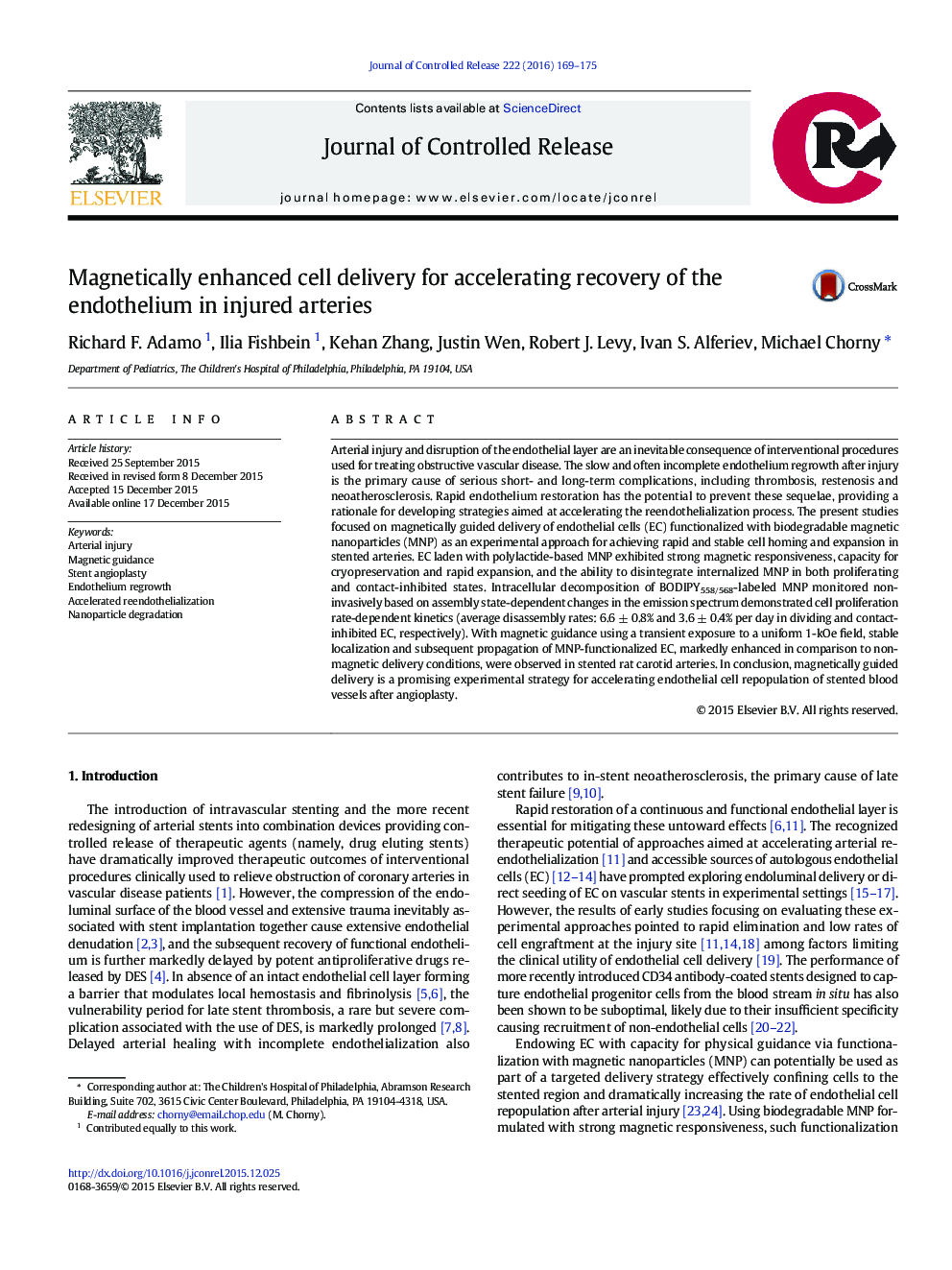| Article ID | Journal | Published Year | Pages | File Type |
|---|---|---|---|---|
| 1423611 | Journal of Controlled Release | 2016 | 7 Pages |
Arterial injury and disruption of the endothelial layer are an inevitable consequence of interventional procedures used for treating obstructive vascular disease. The slow and often incomplete endothelium regrowth after injury is the primary cause of serious short- and long-term complications, including thrombosis, restenosis and neoatherosclerosis. Rapid endothelium restoration has the potential to prevent these sequelae, providing a rationale for developing strategies aimed at accelerating the reendothelialization process. The present studies focused on magnetically guided delivery of endothelial cells (EC) functionalized with biodegradable magnetic nanoparticles (MNP) as an experimental approach for achieving rapid and stable cell homing and expansion in stented arteries. EC laden with polylactide-based MNP exhibited strong magnetic responsiveness, capacity for cryopreservation and rapid expansion, and the ability to disintegrate internalized MNP in both proliferating and contact-inhibited states. Intracellular decomposition of BODIPY558/568-labeled MNP monitored non-invasively based on assembly state-dependent changes in the emission spectrum demonstrated cell proliferation rate-dependent kinetics (average disassembly rates: 6.6 ± 0.8% and 3.6 ± 0.4% per day in dividing and contact-inhibited EC, respectively). With magnetic guidance using a transient exposure to a uniform 1-kOe field, stable localization and subsequent propagation of MNP-functionalized EC, markedly enhanced in comparison to non-magnetic delivery conditions, were observed in stented rat carotid arteries. In conclusion, magnetically guided delivery is a promising experimental strategy for accelerating endothelial cell repopulation of stented blood vessels after angioplasty.
Graphical abstractThe slow endothelium recovery from the denuded area margins (A) can be accelerated by positioning endothelial outgrowth foci along the stented arterial segment using guided delivery of MNP-functionalized cells (B).Figure optionsDownload full-size imageDownload high-quality image (238 K)Download as PowerPoint slide
